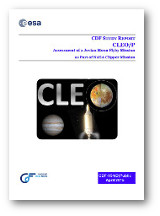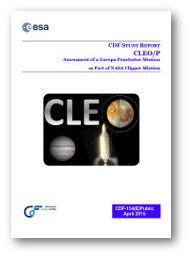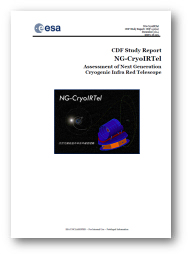Three new studies create mission proposal opportunities
21 October 2015
Three mission assessment studies, of interest in the context of future calls for medium-size missions, are now available. The studies, into a cooled infrared telescope, a Jovian moon flyby mission, and an impactor on Europa, were carried out at ESA's Concurrent Design Facility (CDF) at the request of ESA's Future Missions Office.To succeed in response to an ESA "Call for Missions", mission proposals must be scientifically excellent and must be feasible within defined timelines and budgets. A crucial element in the mission selection is the critical assessment of proposals to identify potential problem areas or aspects that may need careful attention. The three CDF studies that are now published were commissioned by the Future Missions Office in the Directorate of Science and Robotic Exploration. This Office is responsible for the technology preparation of science missions, some of which may become candidates for Cosmic Vision launch opportunities.
Two of the new assessment studies relate to exploration of the Jovian system, which is of particular interest since Jupiter is the archetype for the giant planets of the Solar System and for the numerous giant planets now known to orbit other stars. In addition, Jupiter's diverse Galilean satellites - three of which are believed to harbour internal oceans - are central to understanding the habitability of icy worlds.
The Clipper Europa ESA Orbiter (CLEO) and Clipper Europa ESA Penetrator (CLEP) missions were studied in the context of a potential European participation to NASA's Europa Multiple-Flyby Mission (previously known as the Europa Clipper mission). This NASA mission, dedicated to investigating Europa, will follow on from NASA's JUNO, dedicated to studying Jupiter, and ESA's JUICE, which will perform detailed studies of the Jovian system with particular emphasis on Ganymede.
CLEO would be a Jovian moon flyby mission. For this, the CDF assessed the feasibility of attaching a 250-kilogram autonomous mini-satellite to the NASA spacecraft. The mini-satellite could be released once it arrived at the Jovian system, where it would perform observations and flybys of Io or Europa.
CLEP would involve a high velocity impact on Europa, allowing for investigation of the subsurface. It would also include an experiment focussed on assessing the habitability of that moon.
Both of these CDF studies conclude that CLEO and CLEP would be feasible, and the reports give a realistic timeline for the development of such missions.
The third study concerns a cryogenically cooled infrared telescope, studied in a context similar to the one of the ESA-JAXA cooperation on the SPICA mission, that was proposed to ESA back in 2007. The CDF was requested to study a mission profile that could be implemented jointly by ESA and JAXA, with an ESA contribution to be implemented in the context of an M mission. The result of this assessment study is the Next Generation-Cryogenic cooled InfraRed Telescope (NG-CryoIRTel). This is a 2 m telescope operating below 6 K which will observe in the 20 to 210 micrometre range with unprecedented sensitivity and spatial resolution. NG-CryoIRTel's observations between 28 to 55 micrometres will allow it to bridge the gap between the James Webb Space Telescope (JWST) and the Atacama Large Millimeter/submillimeter Array (ALMA), giving it the capability to deliver unique science.
The scientific community is welcome to use these studies in preparation of possible proposals for future M mission opportunities.



